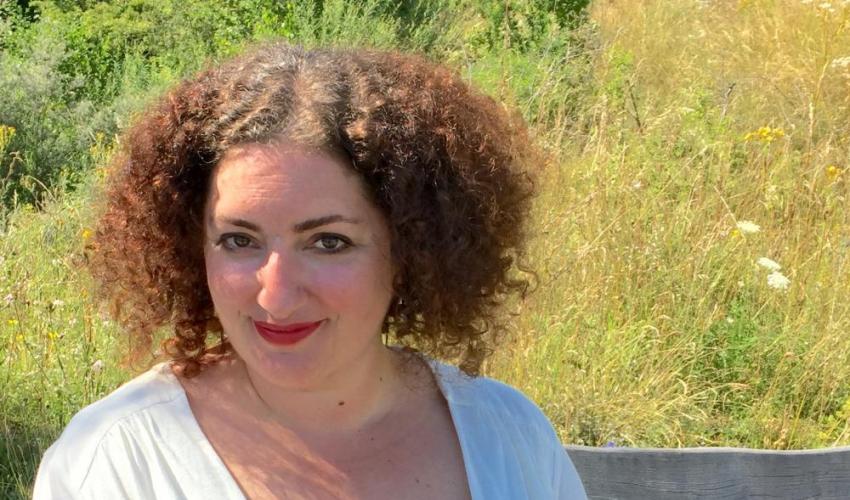IUCN set out ambitious goals to make the 2016 Congress the greenest yet and to create a lasting legacy for Hawai‘i. Alexandra Petersen, Congress Logistics Manager, explains the how and why.
How is this IUCN Congress different from previous events in terms of green efforts?
We’re using a totally different approach this time. Previous sustainability activities focussed mainly on offsetting carbon emissions – generated by flights and the event itself, and the more obvious measures such as recycling. This time we’re looking at the ‘bigger picture’ and a much broader suite of initiatives.
What standards are you using?
We’re using the IUCN Green Congress policy and the Hawaiʻi Green Business Program certification system as benchmarks, but we have realised that our efforts go further. So now we’re aiming for ISO 20121 international sustainable event certification. This means addressing all key financial, economic, social and environmental issues relevant to Congress operations. It’s not enough to focus solely on environmental aspects.
Mitigating carbon emissions is still an important element. We’re aiming not only to mitigate carbon from air travel to Hawai‘i but all carbon emissions resulting from the Congress including shipping of goods, ground travel in Honolulu, hotel stays and emissions associated with on-the-ground logistics.
We’re instigating several new measures, for example, exhibitors have a 10 kg weight allowance and there’s a penalty fee if they exceed this. This encourages them to source equipment locally rather than transport it internationally.
Carbon Mitigation funds will go to the Cordillera Azul National Park project in the Amazon Andes of Peru which mitigates carbon by avoiding an annual loss of 6,800 hectares of forest (equivalent to 7,500 football fields).
What are the main measures being implemented?
There are the more visible measures such as minimising the use of paper. The new Congress app will make a big difference, as there will be no printed programme this time.
We’re using a zero-waste approach, which includes banning the use of single-use plastics. All kitchen scraps and food waste generated at the Congress venue will be collected, plastic tableware replaced with disposable compostable versions, and all of it turned into compost to be used on local farms.
This time we won’t be providing dedicated Congress transport, so participants will use the regular airport shuttle, and then walk, use public transport, or rent bicycles.
Then there are the more ‘invisible’ measures such as minimising energy and water consumption. Many hotels have signed up to the Green Hotels Initiative which covers measures to reduce energy and water consumption, waste and pollution, and they’ll continue to implement these measures after the event.
What are some of the challenges you’re facing?
Hawai‘i currently imports 80-90% of its food and we’re aiming to offer as much locally sourced food as possible, so this is a significant challenge. Because of unpredictable weather conditions, we won’t know the state of Hawai‘i’s fruit and vegetable harvests until the end of August. There will be plenty of vegetarian options and of course, lots of fish! The Congress venue’s chef who has done incredible work, creating appealing menus within sustainable parameters.
What is Hawai‘i doing to support green efforts?
There’s a lot of local interest in Hawaiʻi in green initiatives from the State government, business and civil society groups. The Hawai‘i Green Business Program, a partnership between Hawai‘i’s Departments of Health, Business, Economic Development and Tourism, supports businesses aiming to operate in an environmentally and socially responsible way. This includes businesses that are working with the Congress including tour operators and hotels.
There’s a genuine spirit of cooperation and a willingness to experiment with new ideas. Some of the initiatives are pilot projects and there’s a sense of ‘let’s give it a go, it may not be perfect but it’s a start – something to build on’.
The Congress Green Team is a great example of cooperation. It’s made up of highly experienced people from government, community groups and foundations. They are offering their services free of charge and see the Congress as a fantastic opportunity to ramp up Hawai‘i’s sustainability efforts. Many team members have not worked together before but are looking ahead to collaborations beyond the Congress, hoping to replicate the measures for future big events.
What lasting impact will these measures have?
We want the initiatives we are putting in place to set a new standard for event sustainability and to continue to generate economic, social and environmental benefits for Hawai‘i well beyond the Congress. I’m confident they will.
We can already see changes in the way local suppliers, businesses and hotels are operating. One big exhibition company is aiming to supply materials that are only available in Hawai‘i when normally it would ship them from mainland US. This would save a lot of carbon in shipping. It also sources banners that are produced with recycled materials.
The Congress is also the biggest client for a newly established local organic chicken farmer; it’s helping to jumpstart his business and show other farmers that there’s a growing demand for sustainably produced food.











